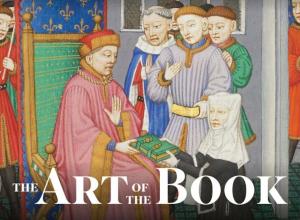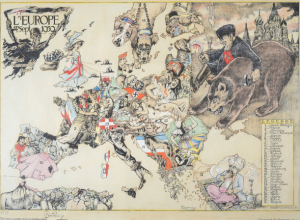Rare Album of Early India Photographs Coming Up at Bonhams
A wealthy young man having fun on a tour of India some 163 years ago, and one of the first to photograph the country compiled an album of photographs which will be sold by Bonhams on March 19 for an estimated £40,000 to £60,000.
Alexis De La Grange’s album offers 49 architectural views, most of which are Mughal, in northern India. These albumen prints, nine numbered and one captioned in the negative, are mounted one per page, the images typically 180 x 218mm. or slightly smaller, bound in red morocco with "Photographies de l'inde Anglaise" in gilt on upper cover, [c.1849-1850].
Born to an aristocratic French family in 1825 (the son of an army colonel, Baron Prosper Amauri Louis, who was an officer of the Ordre national de la Légion d'honneur), de la Grange studied in Paris before serving in the naval artillery from 1844 to 1847. In 1849, and following military service, he embarked upon a two-year trip to India, Ceylon, Java, Malaysia and Singapore. He travelled with his statesman cousin, Felix Lambrecht, who detailed the trip in his book Souvenirs (1873).
Equipped with a camera, taken for the purposes of amusement rather than reportage, it is believed that de la Grange took only 63 photographs during his trip and, by default, his photographic career. Of the existing images known to be by him, the subject matter does not extend beyond Indian architecture; the whereabouts of any images he may have taken during his first four months in Ceylon, Java, Malaysia and Singapore are unknown.
With photography (and travel photography particularly) still in its infancy, de la Grange's images presented in the album predate all of the pioneering masters of travel photography. It is understood that he also taught the intrepid photographer Maxine du Camp suggesting, once again, his fundamental importance in the development of travel photography. This album cements de la Grange’s position as the unsung hero in the development of travel photography as we know it today.
In 1851 de la Grange returned to France where he is believed to have assembled two albums, both entitled "Photographies de l'inde Anglaise", of which this is one. The first, containing 61 images, was dedicated to the politician and historian Adolphe Theirs, a friend of Felix Lambrecht's, and contained de la Grange's extensive manuscript notes. No further photographs can be attributed to de la Grange after this date. Instead he turned to politics before retiring to his chateau in Seborg. He died in February 1917.
Francesca Spickernell of Bonhams Book, Map, Manuscript and Historical Photography Department, comments: “The wonderful and rare thing about this album is that it presents to us some of the first impressions of India by a European. De la Grange’s technical achievements were remarkable for the mid nineteenth century; the quality of these prints is just astounding. This album is of great historical importance.”
Images include: Benares: an English hotel bungalow, captioned 'specimen du habitation anglaise au Bengale' in the neo-classical style (4); Mirzapur: a temple (1); 'Palais de Dig' (1); Fatehpur Sikri: the Grand Mosque and tombs (3); Agra: the marble pavilion of Shah Jehan, the entry gate to the Taj, a general view of the Taj, a detail of the Taj, the Taj mosque and three views of Emperor Akbar's tomb (8); Sikandra: a view of the gate to the garden of Akbar's tomb, another view of the entrance to the garden, two general views of the tomb, and the entrance to the tomb itself (5); Delhi: the Grand Mosque, two views of a tomb, a view of the Tomb of Humayun, Qutb Minar, and a view of the ruins of Quwwat-ul-Islam (Qutb Mosque) (7); Lucknow: two general views, and a view of the Grand Mosque (3); Ajmer: the entrance to the Fort, and detail views of two houses (3): ?Oudjin: the pavillion of a palace, presumed to be the Red Palace at Jaipur, a detail of this palace, a house, and a view of a Muslim cemetery (4); Udaipur: the palace, and three views of a Hindu temple (4); Chittor: three view of a Hindu temple (3); Mundleysir: a Hindu temple (1); Adjunta: a view of the exterior of the Chaitya Cave (1); Ellora: two views of the caves (2).
Provenance: Champagné-Giffart (bookplate); Henri Pierre Briere (1897-1990), and thence by descent to the current owner.















